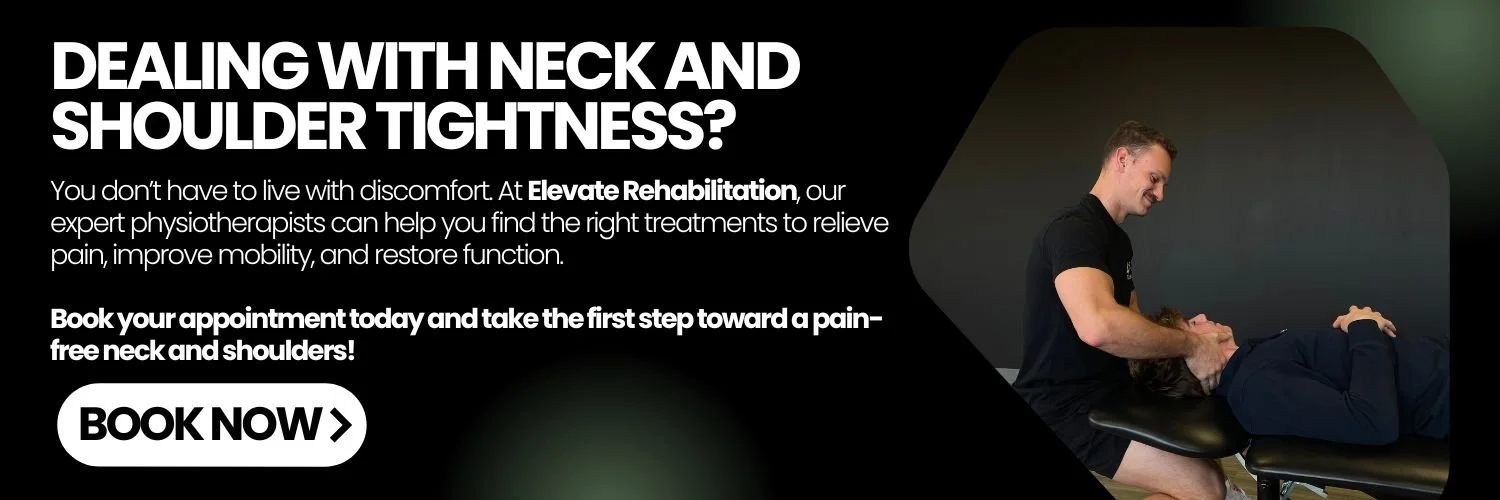How to Relieve Tightness in Your Neck and Shoulders
Tension in the neck and shoulders is a common problem that can affect your daily life. Stress, long hours at a desk, or poor posture often contribute to this discomfort. To relieve tightness, simple techniques like stretches and massage therapy can be very effective.
Stretching the muscles in your neck and shoulders can help alleviate pain. Regular exercises improve mobility and keep your muscles relaxed. Massage therapy is also beneficial. It releases tension and can lead to lasting relief.
Posture correction is important. Maintaining good posture reduces strain on neck and shoulders. Adjusting your workspace and being mindful of your body position can make a big difference.
Understanding Neck and Shoulder Tension
Tension in your neck and shoulders can make daily activities uncomfortable. Learning about the causes and effects on your posture and mobility can help you find solutions.
Causes of Tension and Discomfort
Neck and shoulder tension often comes from several everyday activities. Poor posture, like slouching at a computer, can strain muscles over time. Stress also plays a big role; when you're anxious, your muscles may tighten.
Long periods of inactivity or repetitive motions can cause stiffness, making it hard for muscles to relax. Injuries from accidents or sports can also lead to ongoing tension and discomfort.
Impact on Posture and Mobility
Tension in these areas can change how you hold your body. You might notice your shoulders hunching or your head leaning forward. These changes impact your mobility, making it harder to move freely and comfortably.
If this tension continues, muscles can become sore, and joints might start to lose flexibility. Muscle imbalance can occur, affecting how you sit, stand, and move in your daily life. Proper attention and care can help improve both posture and mobility over time.
Effective Stretches for Tension Relief
Regularly stretching your neck and shoulders can reduce tension and improve flexibility. Focus on gentle, consistent movements to release tight muscles and help you feel better.
Neck Stretching Techniques
Start with the side neck stretch. Sit comfortably, letting your shoulders relax. Tilt your head toward one shoulder and gently hold it for 15-30 seconds. Switch sides and repeat. This can ease tightness.
Next, try the chin tuck. Sit up straight and pull your chin back, creating a "double chin." Hold for 5 seconds and repeat 10 times. This helps align your head and reduces neck strain.
The forward-and-backward neck stretch offers additional release. For the forward stretch, lower your chin toward your chest, holding for about 15 seconds. Reverse this by tilting your head back gently for the same duration.
Shoulder Stretching Routines
Begin with a cross-body shoulder stretch. Bring one arm across your chest, using your other hand to gently press it closer. Hold for 15-30 seconds, then switch arms. This improves shoulder mobility and reduces tension.
Wall stretches are effective for shoulder muscles. Stand facing a wall. Place one hand on the wall and rotate your body away, creating a gentle stretch. Hold for 15 seconds on each side.
Try the shoulder roll exercise. Sit or stand up straight, and roll your shoulders forward in a circular motion five times. Then, reverse the direction. These rolls help reduce stiffness and improve overall shoulder movement.
Massage Therapy for Tension Alleviation
Massage therapy is an effective way to reduce tension in the neck and shoulders. It helps relieve muscle tightness and improves circulation, providing immediate benefits and long-term relief. Depending on your preferences, you can choose between self-massage methods or seek professional help.
Self-Massage Methods
Self-massage can be conveniently done at home. Use your fingers to gently press and knead tight spots on your neck and shoulders. A warm compress prior to massage can further enhance relaxation.
Tools can also be beneficial. For example, massage balls or foam rollers allow you to target specific areas more effectively. When using a massage ball, place it against your neck or shoulder while applying gentle pressure.
Focus on areas where you feel tension. Spend a few minutes on each spot, adjusting pressure based on comfort. Consistency is key, so incorporate self-massage into your routine a couple of times a week.
Professional Techniques
For deeper relief, consider professional massage therapy at Elevate Rehabilitation. Registered Massage Therapy is available to effectively address neck and shoulder tension. Skilled therapists identify your specific needs and customize techniques accordingly.
Swedish massage relaxes muscles with long, flowing strokes. This technique boosts circulation and reduces stress. Another option, deep tissue massage, focuses on deeper muscle layers to relieve chronic tension and pain.
Communicate with your therapist about any discomfort during the session. Regular visits may contribute to lasting tension relief and overall well-being. Professional massage offers expertise you might not achieve on your own, making it a beneficial investment in your health.
Lifestyle Adjustments and Exercises
Improving your daily habits and incorporating exercises can significantly reduce neck and shoulder tension. Focus on maintaining proper posture and engaging in specific exercises to promote muscle relaxation and mobility.
Posture Correction Strategies
Good posture is crucial for reducing neck and shoulder tension. Start by adjusting your workspace: Ensure your computer screen is at eye level, and your chair supports your lower back. Keeping your feet flat on the ground helps maintain balance.
When sitting, avoid slouching. Stand up and stretch every 30 minutes to break long periods of sitting. Practicing mindful posture means checking your stance regularly. Gently pull your shoulders back and down, aligning them with your hips to reduce strain.
Mobility Exercises and Muscle Relaxation
Incorporating mobility exercises can alleviate discomfort. Simple neck tilts and turns improve flexibility. Slowly move your head from side to side, holding each side for a few seconds. Shoulder rolls and arm circles loosen tight muscles.
Muscle relaxation techniques like deep breathing can also be effective. While inhaling, tense your shoulder muscles for a few seconds, then release as you exhale. Additionally, foam rolling the upper back provides relief and increases blood flow to tight areas.
Conclusion
Taking care of your neck and shoulders is important. Regular stretching can help increase flexibility and reduce pain. Try simple exercises like neck rolls or shoulder shrugs to release tension.
Massage therapy can be another great option. A professional massage can target tight muscles and improve circulation. It’s a relaxing way to relieve discomfort in your neck and shoulders.
Good posture plays a key role as well. Be mindful of how you sit or stand throughout the day. Simple adjustments can make a big difference in preventing future pain.
Consider creating a routine that includes various techniques to address tension consistently. This can include stretches, massages, and posture checks.
For more personalized guidance, visit us at Elevate Rehabilitation in Oakville, ON. We’re here to help you find relief and improve your comfort.



